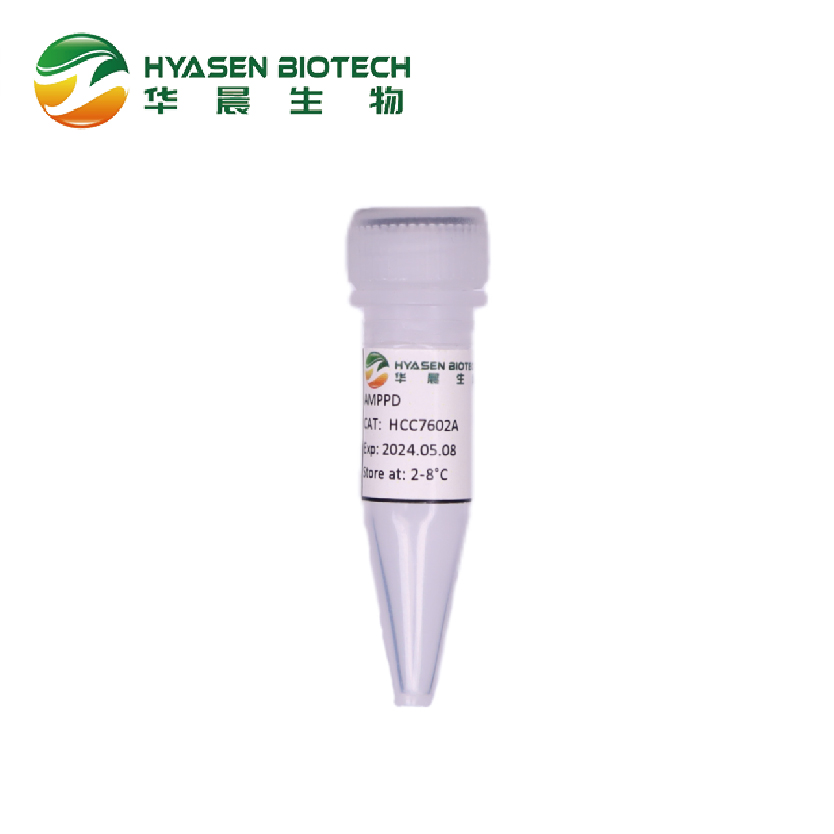
AMPPD-Chemiluminescent Substrate
Description
AMPPD has two important parts in its molecular structure. One is the dioxygen
tetrad ring that connects the benzene ring and adamantane, which can break and emit photons. The other is the presence of alkaline phosphatase, which catalyzes the removal of phosphate groups and forms an unstable intermediate. The intermediate then spontaneously decomposed and emitted photons, and the number of photons released was proportional to the concentration of ALP in the solution, which was suitable for the chemiluminescence immunoassay system with ALP as the labeled enzyme.
Use:
AMPPD is a chemiluminescent liquid with high sensitivity, stability and signal-to-noise ratio, which can be used for immunodetection of Alkaline Phosphatase (ALP) as a marker.
Chemical Structure

Specification
| Test Items | Specifications |
| Description | Yellow green clear liquid |
| Stability | The Iuminescence value of 37℃ was retained above 90% after 7 days of incubation under light protection |
| pH value | 9.5±0.05 |
| The background value | 200-10000 |
| Luminecence value high concentration CV value (compared with the standard, the reaction conditions were 150+5μL, and the enzyme concentration was 0.0032U/mL) | ≤10% |
Transportation and storage
Transportation: Ambient
Storage : Store at 2-8°C, strickly protected from light
Recommended re-test Life: 2 year















